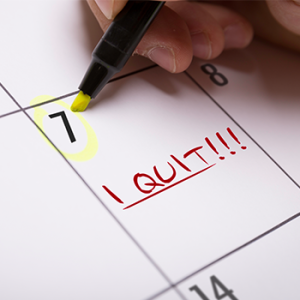
By Dr. Anne Griffiths, Pediatric Pulmonologist
Now is a great time to help your teen quit the vaping habit. With the number of teens and young adults vaping on the rise, you can encourage your child to quit vaping and using e-cigarettes for their own health.
According to the Youth Tobacco survey, nearly 33 percent of 11th graders in the United States use e-cigarettes or vape devices. Experts at Children’s Minnesota found a cluster of cases of severe lung injury in teens and young adults linked to vaping.
In fact, 5.6 million of Americans younger than 18 will die early from a smoking-related illness. That is about 1 of every 13 Americans aged 17 years or younger who are alive today according to the CDC. Emerging data has begun to identify some the health-consequences seen with vaping.
We know quitting vaping can be hard and sometimes it feels impossible. But, don’t be discouraged, many people have successfully quit.
Children’s Minnesota and Dr. Anne Griffiths, pediatric pulmonologist and expert on vaping, have tips to help your child quit vaping for good.
Strategies that work
Put it in writing
People who want to make a change often are more successful when they put their goal in writing. Work with your teen to write down all the reasons why they want to quit vaping, like the money they’ll save or the stamina they’ll gain for playing sports. Keep that list where they can see it. Add new reasons as they think of them.
Get support
People are more likely to successfully quit when friends and family help. If it’s hard to find people who support your child (like if their friends vape and aren’t interested in quitting), encourage your teen to join an online or in-person support group. Engaging the support of a doctor or therapist can help teens anticipate times that will be difficult to avoid vaping exposure and plan how to navigate those social situations.

Set a quit date
Work with your child to pick a date to stop vaping. Put it on the calendar and encourage them to tell friends and family (if they know) that they’ll quit on that day. They can think of this day as a dividing line between the person who once vaped and the new, improved non-vaper they’ll become.
Wash their clothes
Get rid of the smell of vaping and e-cigarettes as much as they can by washing all their clothes and having their coats or sweaters dry-cleaned. If they smoked in their car, have them clean that out, too.
Think about triggers
Most people are aware of the times when they tend to vape whether that is after a meal, at their friend’s house or while they’re driving. Any situation where it feels automatic to vape is a trigger. Once you’ve helped your teen figure out their triggers, try these tips:
- Break the link. If your teen smokes or vapes when they drive, give them a ride to school, have them walk, or take the bus for a few weeks so they can break the connection. If they normally vape after meals, do something else after they eat, like go for a walk or talk to a friend.
- Substitute something else for e-cigarettes and vapes. It can be hard for people to get used to not holding something or not having a something in their mouth. If your child has this problem, stock up on carrot sticks, sugar-free gum, mints, toothpicks or lollipops.
How to handle withdrawal
Quitting an addiction will come with some sort of withdrawal. There can be some physical reactions to quitting including headaches, stomachaches or nausea, crabbiness or depression, sleep disturbance lack of energy, or a desire to eat. While these reactions won’t be pleasant, they will pass so, patience is key. Planning for these symptoms and working with an addiction specialist to help manage them can be beneficial. Here are ways you can help your teen stay on track through the withdrawal symptoms:
Keep busy
It can be easiest to quit when starting on a Monday. This is because during the week people are generally busier with school or work. The more distracted and busier they are, the less time they have to think about or crave vaping or e-cigarettes.
Stay active
This is a great distraction to avoid vaping. Working out, or even just going for a walk, also increases energy levels which can also improve mood and help curb depression and anxiety.
Quit gradually
Some people find that gradually decreasing the number of times they vape or use an e-cigarette is an effective way to quit. But this strategy doesn’t work for everyone. They may find it’s better for them to go “cold turkey” and stop vaping all at once. Many people vape more than they realize, so working together to determine a tailored approach is wise.
Partner with a specialist
Many teens vape more than one kind of thing (such as nicotine and marijuana based products). Collaborating with a specialist may help them navigate which challenges in quitting are driven by addiction, which are driven by a need to cope with stress/anxiety or other life and mental health challenges, and if they would have better success with medical management.
Don’t give up
If your teen slips up, tell them not to give up! Major changes sometimes have false starts. Like many other people, your child may quit successfully for weeks or even months and then suddenly have a craving that’s so strong they feel like they have to give in. Or maybe they accidentally find themselves in one of their trigger situations and give in to temptation.
If they slip up, it doesn’t mean they’ve failed. It just means they’re human. Here are three ways to get back on track:
- Remind your teen to think about their slip as one mistake. Help them take notice of when and why it happened and move on.
- Tell them to keep in mind that vaping one time doesn’t undo the progress they’ve made, so vaping one time (or even two or three) after they quit doesn’t make them dependent again.
- Remind them why they quit and how well they’ve done — or have someone in their support group, family, or friends do this for them.
Quitting vaping isn’t easy. Give your teen a well-deserved reward! Tell them to set aside the money they usually spend on vaping or e-cigarettes. When they’ve stayed vape-free for a week, two weeks, or a month, give them a reward like a gift card, movie, or items that highlight their interests outside of vaping. Celebrate again every vape-free year. They’ve earned it.